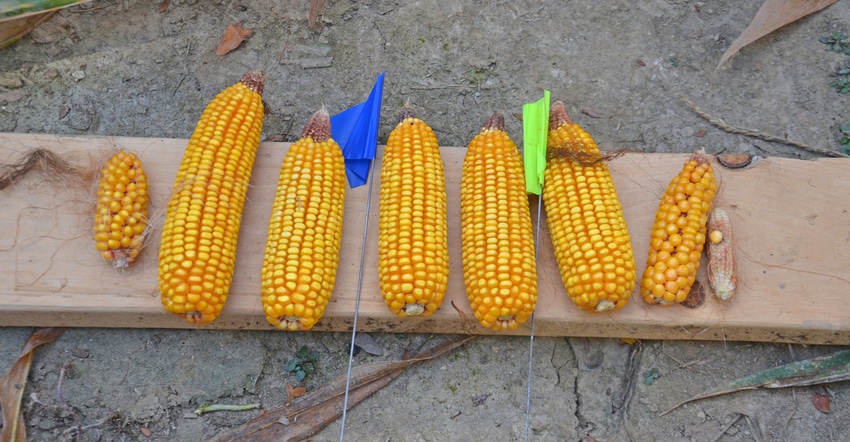
Last week’s article tracked differences in weight of ears in two rows where there was lots of variation in emergence date in the Corn Watch ’20 emergence plot. Plants were flagged with different colors based on day of emergence. In those two rows, several plants emerged one, two, three, four or even more than four days after the first plants emerged.
When all ears were weighed, there was little difference between those from plants that emerged first and those that emerged up to two days later. In fact, weight was slightly higher per ear for the first and second days. However, average weight trailed off for ears from plants emerging three or more days after the first plants.
Related: Observations about emergence delays, yield in corn
“That is pretty much what we expected,” says Dave Nanda, director of genetics for Seed Genetics Direct, sponsor of Corn Watch ’20. “Yet it was interesting to note that a delay up to 48 hours in emergence had no effect on final ear weight.”
Digging deeper
In the remaining eight rows that were flagged, each representing 1/1,000 of an acre, emergence was much more uniform. In fact, there were only a total of eight plants in all eight rows that emerged three or more days after the first plants emerged. Those ears were pulled and weighed. Then Nanda pulled eight ears at random from plants in those eight rows that were among the first to emerge.
Average weight for the eight ears from plants emerging three or more days late was 0.38 pound. Average weight for the normal ears was 0.59 pound. That happens to be the exact same weight for ears from initial-emerging plants in the first two rows where there was more variation in emergence, reported on earlier.
“At first glance, this looks like an open-and-shut case: Ears from plants emerging first weighed, on average, over 60% more than ears from plants emerging three or more days later,” Nanda says. “That is what you would expect, and it makes the case for doing whatever you can to ensure uniform emergence. In this case, the numbers would suggest plants emerging within 48 hours of each other qualifies as uniform emergence.”
However, that’s not the end of the story, and it’s not an open-and-closed case, Nanda believes.
“Look at the ears from plants emerging three or more days late, and what stands out is inconsistency,” he says. “There is everything from a cob with a few kernels to nubbins to very good ears in that pile. What that tells me is that there is more than just difference in days to emergence going on.”
Nanda believes one of the other major factors influencing ear size may be plant spacing. “When we went back and looked, some of the late-emerging plants had a close neighbor, but some had more space. The plants with more space tended to still function like normal plants and produce a normal ear.”
Nanda’s takeaway message is that while uniform emergence is important, it’s not the only thing you need to achieve at planting. “Plant spacing is at least as important as uniform emergence,” he says.
About the Author(s)
You May Also Like




